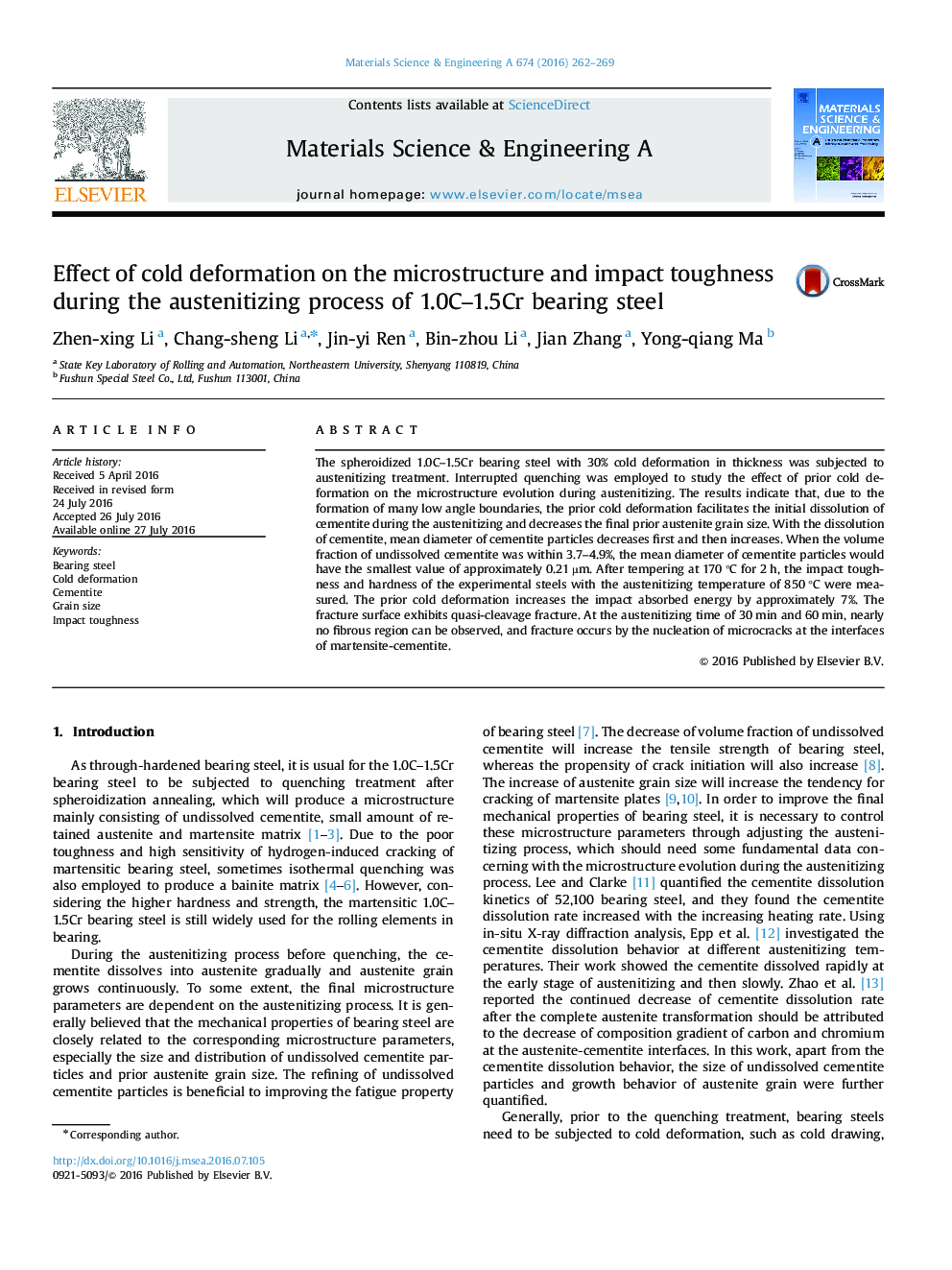| Article ID | Journal | Published Year | Pages | File Type |
|---|---|---|---|---|
| 7974937 | Materials Science and Engineering: A | 2016 | 8 Pages |
Abstract
The spheroidized 1.0C-1.5Cr bearing steel with 30% cold deformation in thickness was subjected to austenitizing treatment. Interrupted quenching was employed to study the effect of prior cold deformation on the microstructure evolution during austenitizing. The results indicate that, due to the formation of many low angle boundaries, the prior cold deformation facilitates the initial dissolution of cementite during the austenitizing and decreases the final prior austenite grain size. With the dissolution of cementite, mean diameter of cementite particles decreases first and then increases. When the volume fraction of undissolved cementite was within 3.7-4.9%, the mean diameter of cementite particles would have the smallest value of approximately 0.21 µm. After tempering at 170 °C for 2 h, the impact toughness and hardness of the experimental steels with the austenitizing temperature of 850 °C were measured. The prior cold deformation increases the impact absorbed energy by approximately 7%. The fracture surface exhibits quasi-cleavage fracture. At the austenitizing time of 30 min and 60 min, nearly no fibrous region can be observed, and fracture occurs by the nucleation of microcracks at the interfaces of martensite-cementite.
Related Topics
Physical Sciences and Engineering
Materials Science
Materials Science (General)
Authors
Zhen-xing Li, Chang-sheng Li, Jin-yi Ren, Bin-zhou Li, Jian Zhang, Yong-qiang Ma,
